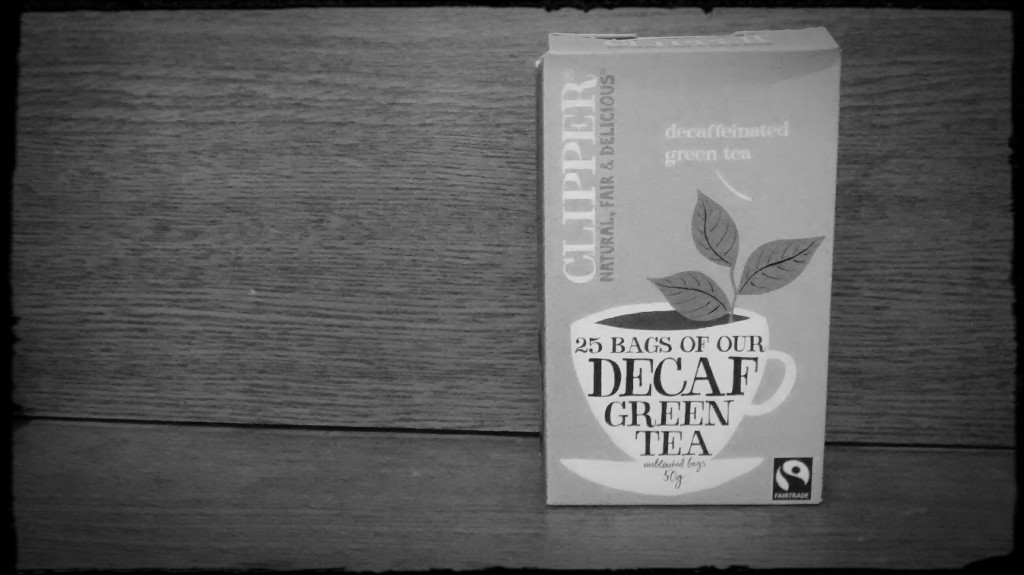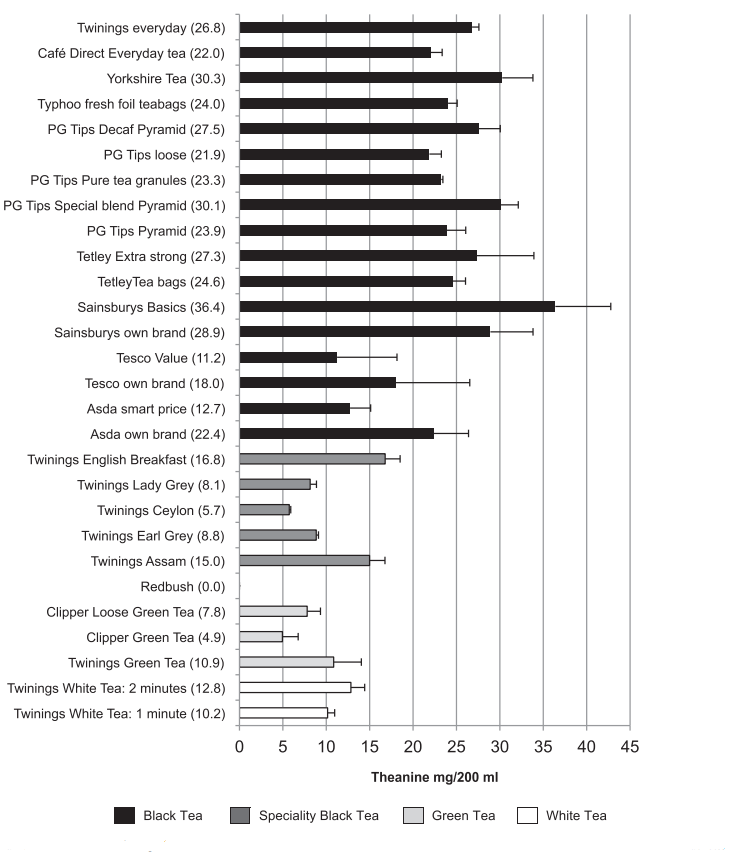Despite being a complex mixture of chemicals much of the cognitive effects of tea are unfairly attributed to the caffeine. Decaffeinated tea is interesting nutritionally because many of the other components of tea are known to be biologically active. The decaffeination process removes plant alkaloids and this results in low to absent amounts of methylxanthines in decaffeinated tea. However, decaffeinated tea may still possess cognitive effects because of other non-alkaloid chemicals within the tea that remain following the decaffeination process. In particular tea contains the non-proteinogenic amino acid theanine (γ-glutamylethylamide), a derivative of glutamic acid which may have particular psychological effects. Green, black, white and oolong teas all contain high amounts of theanine, but coffee does not. Tea has special relaxing properties that are opposite to the energising properties of coffee, and theanine may be responsible for these effect. The theanine content of various teas have been analysed in research studies (figure 1)1.
Although some claim higher concentrations of theanine in green tea, the results above (figure 1) show that black tea contains significantly more theanine that green or white tea. Some other studies have boiled extracts of tea for 10 minutes prior to analysis, which may explain the higher concentrations of theanine reported. However, this does not properly simulate the brewing of tea. Decaffeinated tea contains theanine then, but variations between brands of teas are evident. In addition, younger leaves tend to contain more theanine that older leaves. This is because theanine is converted to polyphenols during the maturation process in tea leaves. As the theanine content of the leaves decreases the polyphenol concentration tends to rise. Comparisons of caffeinated and decaffeinated tea have been made with regard their theanine content. For example, PG Tips decaffeinated tea contains significantly more theanine than standard caffeine containing PG Tips, although the reason for this is not fully understood.
Interestingly, higher quality teas contain lower concentrations of theanine compared with lower quality teas. The quality of tea is graded on the quality and condition of the leaves suggesting that lower quality leaves produce more theanine because of the growing and storage conditions of the tea plants. Extraction of theanine with cold water produces the same concentration of theanine in solution as using boiling water, suggesting that theanine is not degraded by heat. Theanine is released quickly into solution and rises in the first 5 minutes and the rate of diffusion into solution is proportional the the theanine content of the tea. Agitation of the tea bags through stirring and squeezing has also been shown to increase the rate of diffusion of theanine into solution. Further, the finer particles in some tea bags may increase the release of theanine to solution. Addition of sugar and milk does not affect the release of theanine. Decaffeinated tea made by brewing bags in water for 5 minutes therefore release most of the theanine into solution.
The Chinese consider white tea to be the sub-species Camellia sinensis var. khenghe bai hao and Camellia sinensis var. fudin bai hao which are found only in the Fujian province of China. Other countries define white tea by how it is picked, using only the first buds and leaves of the traditional Camellia sinensis plant. White tea is dried with minimal processing, which gives the tea a lighter colour. White tea has been claimed to be naturally lower in caffeine than green and black tea. However, in one study2comparisons of the caffeine content showed that white tea contained more caffeine compared to green tea (3.35 to 5.74 compared to 1.67 to 3.90 g per 100g). In the same study comparisons of the caffeine content of black and green tea showed similar levels of caffeine (2 to 5.4 and 1.5 to 5.2 g per 100g, respectively). White tea may therefore contain as high or higher level of caffeine compared to black or green tea, but does not appear to contain higher levels of theanine. The catechin content of white tea is similar to that of green tea (~13 g per 100g).
Decaffeinated tea is made through solvent extraction of the plant alkaloids. If organic solvents are used this can however leave residues in the tea, which may not be preferable to leaving the caffeine in the tea leaves. Water is effective at removing caffeine and the process allows retention of the polyphenol content without leaving residues of organic solvents3. Making decaffeinated tea with water is possibly because although both catechins and caffeine are removed from the leaves with water, the rates of removal are different. For example, 10 minutes of blanching allows 85 % of the caffeine to be removed from the leaves, but retains 85 % of the catechin content within the leaves. Blanching for a further 25 minutes does not greatly reduce the caffeine content of the leaves, but decreases the catechin content further. Using water as a method to produce decaffeinated tea therefore results in a product with around 85 % less caffeine and around 15 % less total catechins. However, theanine levels also fall around 30 % in the making of decaffeinated tea.
RdB


